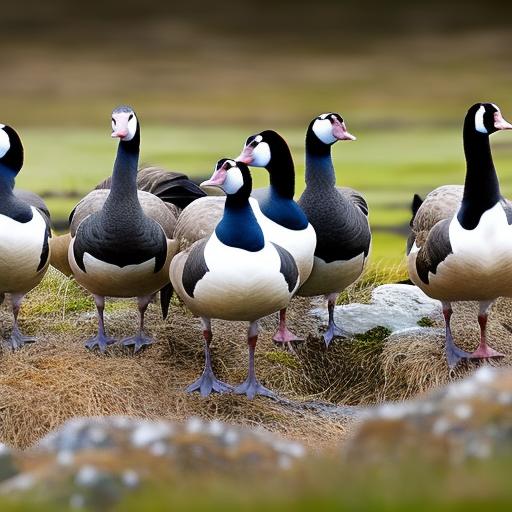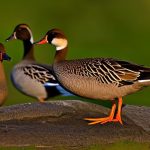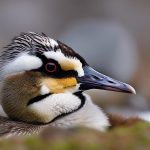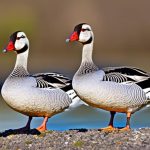Shetland Geese breeding is a fascinating and rewarding hobby or business venture that involves the selective breeding of Shetland Geese for various purposes. These geese are known for their unique characteristics and physical appearance, making them highly sought after by breeders and enthusiasts alike. Whether you are looking to start a small-scale breeding operation or simply want to enjoy the beauty and companionship of these geese, Shetland Geese breeding can be a fulfilling endeavor.
Breeding Shetland Geese offers numerous benefits. Firstly, it allows you to contribute to the preservation and conservation of this rare breed. Shetland Geese are considered a heritage breed, meaning they have a long history and cultural significance. By participating in their breeding, you are helping to ensure their survival for future generations.
Additionally, breeding Shetland Geese can be a profitable business venture. The demand for these geese and their products, such as feathers and meat, is steadily increasing. With proper care and management, you can establish a successful business that caters to this niche market.
Key Takeaways
- Shetland Geese are a unique and hardy breed that have been bred for centuries in the Shetland Islands.
- They are smaller than most domestic geese, with distinctive black and white markings and a calm temperament.
- When selecting breeding stock, it is important to choose birds that are healthy, have good conformation, and exhibit desirable traits such as good egg production and strong maternal instincts.
- Breeding season for Shetland Geese typically begins in late winter or early spring, and mating behavior can be quite aggressive.
- Incubation and hatching of Shetland Geese eggs takes about 30 days, and goslings require careful attention and protection from predators.
History and Origin of Shetland Geese
The story behind the Shetland Geese breed is quite fascinating. These geese are believed to have originated from the Shetland Islands, which are located off the northeast coast of Scotland. They were brought to the UK in the early 19th century by sailors who stopped at the islands during their travels.
Shetland Geese were primarily bred for their meat and feathers, which were highly valued at the time. They were known for their ability to thrive in harsh weather conditions and their excellent foraging skills. Over time, they became popular among farmers and breeders in other parts of the UK and eventually spread to other countries around the world.
Today, Shetland Geese are considered a rare breed and are listed on the Rare Breeds Survival Trust watchlist. Efforts are being made to preserve and promote this breed, as their numbers have significantly declined over the years.
Characteristics and Physical Appearance of Shetland Geese
Shetland Geese are known for their unique characteristics and physical appearance. They are medium-sized geese, with males weighing around 12-14 pounds and females weighing slightly less. Their bodies are compact and well-muscled, giving them a sturdy and robust appearance.
One of the most distinctive features of Shetland Geese is their plumage. They have a beautiful combination of white feathers with gray or black markings on their wings and back. This coloration gives them a striking and elegant look that sets them apart from other goose breeds.
In addition to their appearance, Shetland Geese are also known for their friendly and docile temperament. They are generally calm and easy to handle, making them suitable for both novice and experienced breeders. Their gentle nature also makes them excellent companions and pets.
Selecting Breeding Stock for Shetland Geese
Selecting the best breeding stock is crucial for successful Shetland Geese breeding. When choosing geese for breeding, it is important to look for individuals that exhibit desirable traits such as good health, strong body conformation, and productive egg-laying abilities.
Start by selecting geese that are free from any visible signs of disease or deformities. Look for birds with bright eyes, clean feathers, and a healthy appetite. Avoid birds that appear lethargic or have any signs of respiratory distress.
Next, consider the body conformation of the geese. Look for individuals with a well-rounded body shape, strong legs, and a straight back. These physical attributes indicate good overall health and breeding potential.
Finally, consider the egg-laying abilities of the geese. Look for females that have a history of consistent and productive egg-laying. This will ensure a steady supply of fertile eggs for hatching.
Breeding Season and Mating Behavior of Shetland Geese
The breeding season for Shetland Geese typically begins in late winter or early spring, depending on the climate and geographical location. During this time, the geese become sexually mature and exhibit mating behaviors.
Male Shetland Geese, known as ganders, will often engage in courtship displays to attract females. These displays may include head bobbing, wing flapping, and honking. The gander will also chase after the female, attempting to establish dominance and win her over.
Once a pair has formed, they will engage in mating behavior. The male will mount the female from behind and copulate with her. This process may occur multiple times over a period of several days to ensure successful fertilization.
It is important to provide suitable nesting areas for the geese during the breeding season. This can be in the form of nesting boxes or natural areas with ample vegetation for building nests. The female will lay her eggs in the nest and incubate them until they hatch.
Incubation and Hatching of Shetland Geese Eggs
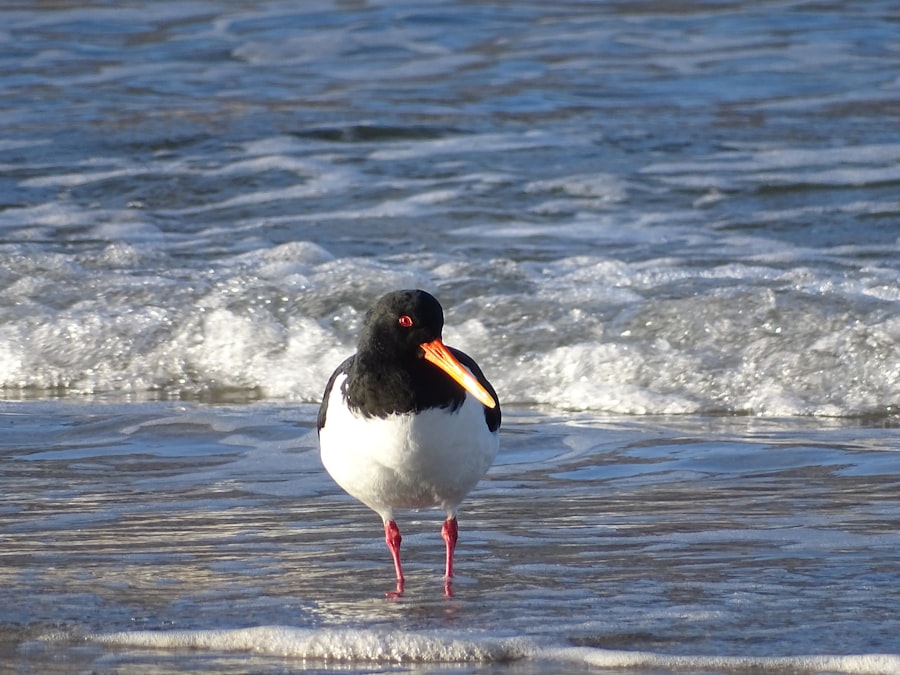
The process of incubating and hatching Shetland Geese eggs is an exciting and rewarding experience. Once the female has laid her eggs, she will begin incubating them to keep them warm and facilitate their development.
The incubation period for Shetland Geese eggs is approximately 28-34 days. During this time, it is important to provide a suitable environment for the eggs to develop. This includes maintaining a consistent temperature and humidity level in the incubator or nest.
It is recommended to use an incubator specifically designed for waterfowl eggs, as it provides optimal conditions for successful hatching. The temperature should be set at around 99-100 degrees Fahrenheit, with a humidity level of 50-55%.
During the incubation period, it is important to regularly monitor the eggs for signs of development. Candling the eggs can help determine if they are fertile and progressing as expected. This involves shining a bright light through the egg to observe the embryo inside.
Once the eggs are ready to hatch, the goslings will begin pecking at the shell to break free. It is important to provide a safe and warm environment for the goslings to hatch and dry off. Once they have hatched, they can be moved to a brooder where they can continue to grow and develop.
Caring for Goslings and Young Shetland Geese
Caring for goslings and young Shetland Geese is crucial for their health and development. During the first few weeks of life, they are particularly vulnerable and require special attention.
Provide a clean and warm brooder for the goslings, with a temperature of around 90-95 degrees Fahrenheit for the first week. Gradually decrease the temperature by 5 degrees each week until they are fully feathered and can regulate their body temperature.
It is important to provide fresh water and feed specifically formulated for goslings. This will ensure they receive the necessary nutrients for growth and development. Additionally, provide ample space for exercise and socialization, as this will contribute to their overall well-being.
Regularly monitor the goslings for any signs of illness or distress. Common health issues in young geese include respiratory infections, parasites, and nutritional deficiencies. Promptly address any health concerns by consulting with a veterinarian or experienced breeder.
Feeding and Nutrition for Shetland Geese Breeding
Proper feeding and nutrition are essential for the health and productivity of Shetland Geese. A balanced diet that meets their nutritional needs will ensure optimal growth, egg production, and overall well-being.
Shetland Geese are primarily grazers and foragers, so it is important to provide access to fresh pasture or forage. This will allow them to consume a variety of grasses, plants, and insects, which contribute to their overall health.
In addition to forage, it is important to provide a commercial feed specifically formulated for geese. This feed should contain a balance of protein, carbohydrates, vitamins, and minerals. Consult with a poultry nutritionist or veterinarian to determine the appropriate feed for your geese based on their age and purpose.
Supplement the diet with fresh water, as geese require ample hydration. Ensure that the water is clean and easily accessible at all times. Additionally, provide grit or small stones for the geese to consume, as this aids in digestion.
Health and Disease Management for Shetland Geese
Like any livestock, Shetland Geese are susceptible to various health issues and diseases. It is important to implement proper health management practices to prevent and treat these conditions.
Regularly inspect the geese for any signs of illness or distress. Common symptoms of health issues include lethargy, loss of appetite, respiratory distress, diarrhea, and abnormal feather growth. If you notice any of these signs, consult with a veterinarian or experienced breeder for proper diagnosis and treatment.
Implement biosecurity measures to prevent the introduction and spread of diseases. This includes quarantining new birds before introducing them to the flock, practicing good hygiene and sanitation practices, and regularly disinfecting equipment and housing areas.
Vaccinations may be recommended to protect against specific diseases prevalent in your area. Consult with a veterinarian to determine the appropriate vaccination schedule for your geese.
Selling and Marketing Shetland Geese and their Products
Selling Shetland Geese and their products can be a profitable venture if done effectively. There is a growing demand for these geese and their products, making it a niche market with potential for success.
Start by identifying your target market. Determine who would be interested in purchasing Shetland Geese or their products, such as feathers, meat, or eggs. This may include other breeders, homesteaders, or individuals interested in rare and heritage breeds.
Develop a marketing strategy to reach your target market. This may include creating a website or online store to showcase your geese and products, participating in local farmers markets or poultry shows, or utilizing social media platforms to promote your business.
Consider offering value-added products to attract customers. This may include creating unique feather crafts or products made from Shetland Geese feathers, such as pillows or jewelry. Additionally, consider offering educational resources or workshops to educate others about the breed and its significance.
Shetland Geese breeding is a fascinating and rewarding hobby or business venture that offers numerous benefits. By participating in the breeding of this rare breed, you are contributing to its preservation and conservation. Additionally, breeding Shetland Geese can be a profitable business venture, as there is a growing demand for these geese and their products.
Throughout this article, we have explored the history and origin of Shetland Geese, their unique characteristics and physical appearance, selecting breeding stock, the breeding season and mating behavior, incubation and hatching of eggs, caring for goslings and young geese, feeding and nutrition, health and disease management, and selling and marketing Shetland Geese and their products.
Whether you are a seasoned breeder or just starting out, Shetland Geese breeding offers endless possibilities for enjoyment and success. Consider embarking on this journey and experience the joy of raising these beautiful geese.
If you’re interested in breeding Shetland geese, you may also find this article on poultrywizard.com about A-Frame Chicken Coops helpful. A well-designed coop is essential for providing a safe and comfortable environment for your geese. Check out the article to learn more about the benefits of A-Frame Chicken Coops and how they can be adapted for geese breeding. Read more here.
FAQs
What are Shetland geese?
Shetland geese are a breed of domesticated geese that originated from the Shetland Islands in Scotland. They are known for their small size, hardiness, and adaptability to different environments.
What is breeding Shetland geese?
Breeding Shetland geese involves selecting healthy and genetically diverse birds to mate in order to produce offspring with desirable traits. This can include traits such as size, feather color, and temperament.
What is the breeding season for Shetland geese?
The breeding season for Shetland geese typically begins in late winter or early spring, depending on the climate and location. During this time, the geese will begin to pair up and build nests in preparation for laying eggs.
How many eggs do Shetland geese lay?
Shetland geese typically lay between 20-30 eggs per year, with each egg taking around 30 days to hatch. The eggs are usually laid in a nest that the female has built, and both parents will take turns incubating the eggs.
What is the lifespan of Shetland geese?
Shetland geese can live for up to 20 years in captivity, although their lifespan in the wild is typically shorter due to predation and other environmental factors.
What are some common health issues that Shetland geese may face?
Shetland geese are generally hardy and resilient birds, but they may be susceptible to certain health issues such as respiratory infections, parasites, and foot problems. Regular veterinary check-ups and proper care can help prevent these issues from occurring.
Meet Walter, the feathered-friend fanatic of Florida! Nestled in the sunshine state, Walter struts through life with his feathered companions, clucking his way to happiness. With a coop that’s fancier than a five-star hotel, he’s the Don Juan of the chicken world. When he’s not teaching his hens to do the cha-cha, you’ll find him in a heated debate with his prized rooster, Sir Clucks-a-Lot. Walter’s poultry passion is no yolk; he’s the sunny-side-up guy you never knew you needed in your flock of friends!

